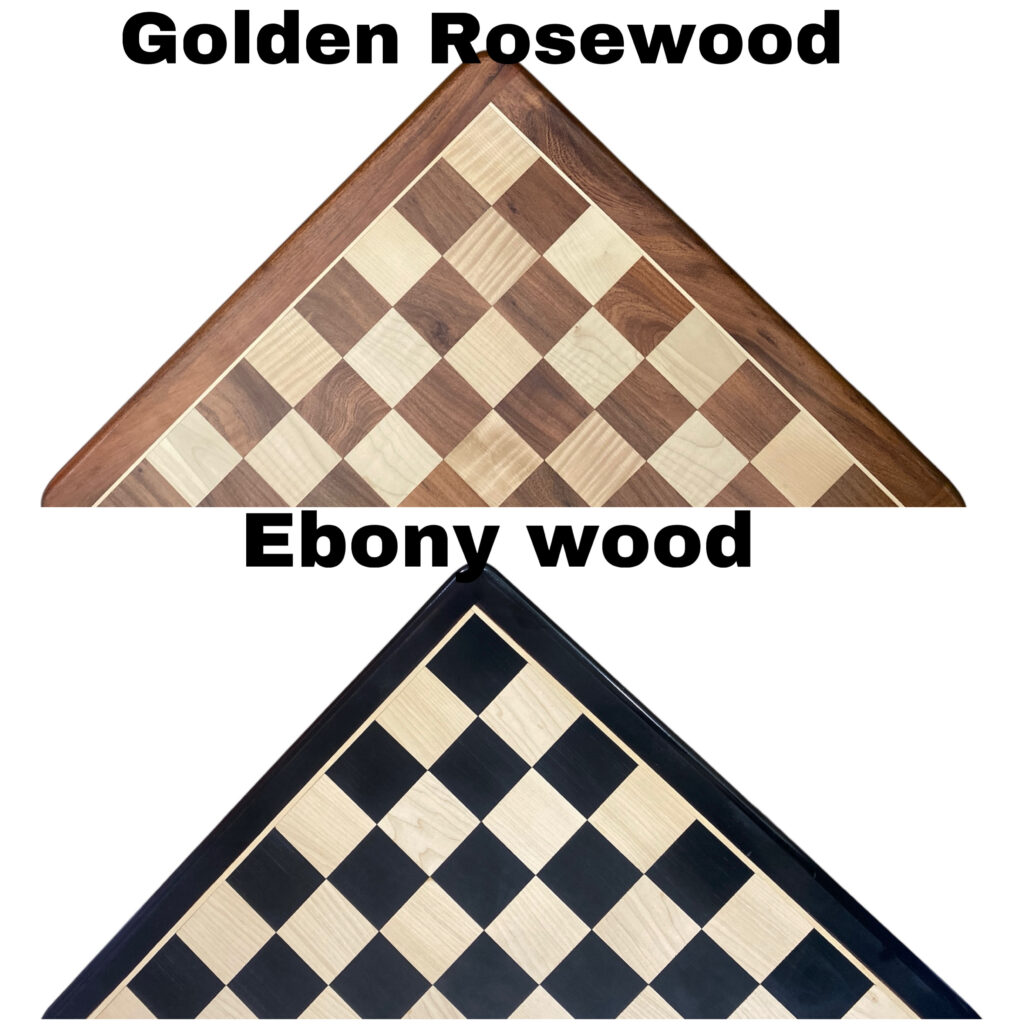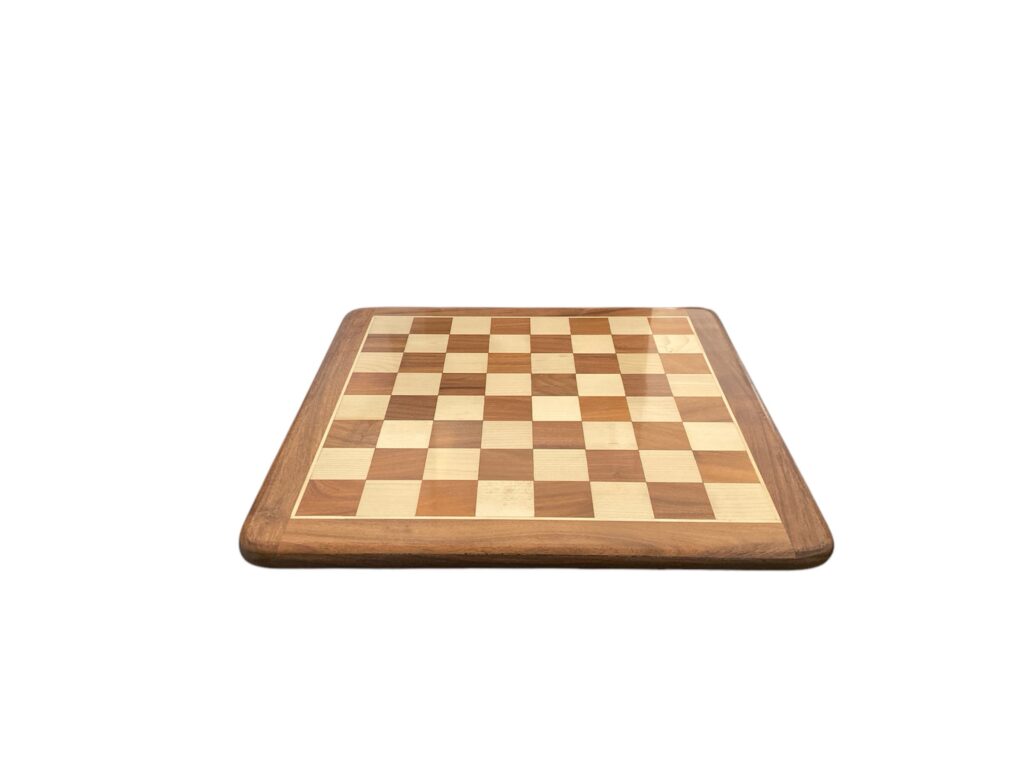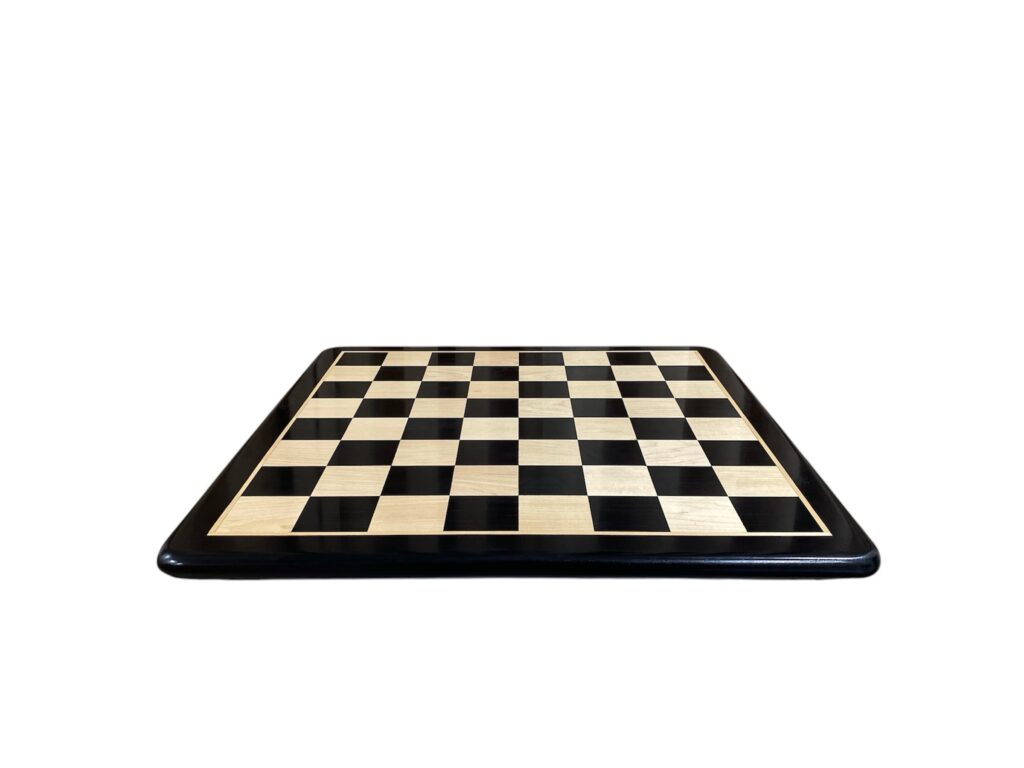Flat 30% OFF Use Code FLAT30
Flat 15% OFF Use Code STORE15
Flat 40% OFF Use Code FLAT40
COD Available
Flat 30% OFF Use Code FLAT30
Flat 15% OFF Use Code STORE15
Flat 40% OFF Use Code FLAT40
COD Available

Chess boards serve as the foundational element of the game of chess, providing the necessary surface upon which strategic battles unfold. The significance of these boards extends beyond mere functionality; they are integral to the aesthetics and overall experience of playing chess. As such, the materials chosen for crafting chess boards can influence not just their durability, but also their visual appeal and tactile quality, which are essential for both casual and professional players.
Numerous materials are utilized in the construction of chess boards, each offering distinct properties. Traditional options include wood, plastic, and glass, with wooden boards often being favored for their timeless elegance and superior craftsmanship. Among the wooden choices, two materials stand out: golden rosewood and ebony. These woods are renowned for their unique grain patterns, rich colors, and smooth finishes, contributing significantly to the game’s aesthetic value. Golden rosewood, with its warm hues and striking patterns, contrasts with the deep, dark allure of ebony, which has a regal quality often associated with luxury.
The choice of material does not only impact the visual characteristics but also affects the overall gameplay experience. For instance, the density and weight of the wood can influence how stable the board feels during play. Additionally, the smooth finish of quality boards enhances piece movement, providing players with a more engaging experience. Understanding these differences helps prospective chess enthusiasts make informed decisions when selecting a chess board, ensuring that their choice complements both their personal style and gaming needs.

Golden rosewood, known for its warm, reddish-brown hue and striking grain patterns, is a highly sought-after material in the crafting of high-quality chess boards. This exotic wood, often sourced from regions such as India and Indonesia, captures the eye with its unique blend of natural beauty and durability. The rich tones can exhibit variations from light golden to darker amber shades, making each chess board a distinct piece of art. The enchanting appearance of golden rosewood is enhanced by its intricate grain, which can include straight lines, wavy patterns, and occasional darker streaks, all of which contribute to its aesthetic appeal.
The sourcing of golden rosewood is as significant as its characteristics. As it is derived from sustainable forests, responsible harvesting practices are essential to preserve the natural ecosystem where this wood is found. Artisans who create chess boards from golden rosewood are often committed to sourcing wood that complies with environmental regulations, ensuring that the beauty of the wood is matched by a commitment to sustainability.
In addition to its visual appeal, golden rosewood boasts impressive durability, making it an excellent choice for items that require longevity and daily use, such as chess boards. This wood is naturally resistant to warping and scratching, providing an enduring surface for players. The tactile experience of moving pieces on a golden rosewood chess board is unmatched, as the smooth finish enhances gameplay while reflecting the elegance of the material.
Typical designs featuring golden rosewood often incorporate contrasting woods, such as maple or ebony, to create a stunning visual effect. The juxtaposition of lighter and darker woods highlights the golden rosewood’s beauty and makes for captivating chess board configurations. Overall, golden rosewood stands out as a premium option, marrying tradition with high-quality craftsmanship, appealing to both seasoned players and collectors alike.

Ebony wood is widely recognized as one of the most premium materials used in the manufacture of chess boards. Its rich, deep black color provides an aesthetic appeal that is unmatched by other woods. This striking hue not only contributes to the sophisticated look of a chess set but also enhances the contrasting lighter colors used alongside it, making the pieces and the board more visually striking. As a hardwood, ebony boasts remarkable density and weight, which gives it a solid and substantial feel. This quality allows chess players to experience a tactile satisfaction that elevates the chess-playing experience.
The luxurious feel of ebony wood is created by its smooth texture and natural sheen, offering a sensory experience that is both gratifying and elegant. The interplay of light on the polished surface accentuates the beauty of the grain, providing a visual allure that appeals to both chess aficionados and casual players alike. Furthermore, the heft of ebony can enhance the stability of the board, preventing any unwanted movement during an intense game.
Historically, ebony wood has played a significant role in chess manufacturing, dating back to ancient times when it was favored by royalty and affluents for its status. Over the years, it has been sourced primarily from regions in Africa and Asia, with different types of ebony, such as Macassar ebony and African ebony, each offering unique characteristics. Sustainable sourcing practices are becoming increasingly important, leading manufacturers to seek ethically harvested ebony to meet market demands. This emphasis on sustainability is crucial in preserving these valuable trees for future generations while maintaining the exceptional qualities that make ebony wood a sought-after material for chess boards.
The visual appeal of a chess board significantly influences its overall desirability, and the choice of wood plays a crucial role in this aesthetic. Golden rosewood and ebony wood present distinct characteristics that cater to different tastes among chess enthusiasts. Golden rosewood, characterized by its vibrant golden to reddish-brown hues, varies in color intensity which creates a warm and inviting appearance. This wood is also known for its unique grain patterns that add depth and visual intrigue, often showcasing an interplay of lighter streaks against the darker base. When crafted into a chess board, golden rosewood provides a striking contrast to lighter pieces, creating a dynamic and attractive playing surface.
In contrast, ebony wood is typically recognized for its rich, deep black coloration. This dark, sleek finish exudes elegance and sophistication, often preferred by those who appreciate a classic and authoritative aesthetic. The grain of ebony is less pronounced compared to that of golden rosewood, offering a smooth, uninterrupted surface that adds to its luxurious feel. The high sheen of ebony enhances its appeal, reflecting light in a way that further accentuates its color depth.
The choice between these two types of wood is largely subjective and is influenced by personal style preferences. While some individuals may be inclined towards the natural warmth and intricate patterns of golden rosewood, others may gravitate towards the timeless elegance of ebony. The visual differences not only impact the chess board’s aesthetic but may also speak to the player’s personality and the ambiance of the playing environment. Ultimately, both golden rosewood and ebony wood present unique attributes, ensuring that chess enthusiasts can find a board that resonates with their individual aesthetic desires.
When considering durability and longevity in chess boards, golden rosewood and ebony wood present two distinct choices, each with its unique attributes. Golden rosewood, known for its rich color and striking grain, is a hardwood that primarily thrives in tropical climates. Its dense structure contributes to its resistance against wear and tear, making it a suitable option for regular gameplay. Over time, with proper care, golden rosewood can maintain its integrity and aesthetic appeal, enduring the rigors of everyday play.
On the other hand, ebony wood, highly admired for its deep black hue and smooth finish, is regarded as one of the most durable woods available. Originating from tropical regions, ebony demonstrates excellent resistance to scratches and dents, making it a preferred material for luxury items, including chess boards. The natural oils present in ebony contribute to its longevity, ensuring that it withstands daily use without significant degradation. However, it is important to note that the scarcity of ebony can make it a more costly option than golden rosewood.
To ensure the longevity of both types of chess boards, specific care procedures should be followed. For golden rosewood, regular dusting and occasional application of a wood conditioner can help preserve its color and prevent drying. In contrast, ebony wood requires similar maintenance but emphasizes the need for avoiding exposure to excessive moisture, which may warp the material. Applying a suitable wax finish periodically can enhance its luster while protecting the surface from everyday wear.
Ultimately, both golden rosewood and ebony wood chess boards offer remarkable durability and longevity when cared for properly. The choice between the two often rests on personal preference, budget considerations, and desired aesthetics. Understanding these aspects helps enthusiasts make informed decisions when selecting their ideal chess board.
When evaluating the financial aspects of golden rosewood and ebony wood chess boards, several factors come into play, including the availability of materials, craftsmanship required for production, and the target audience. Golden rosewood, known for its rich color and unique grain patterns, can be less expensive than ebony due to its relative availability in global markets. Although both types of wood are considered premium, the sourcing of golden rosewood is often less rigorous than that of ebony, which is becoming increasingly rare due to overharvesting and environmental regulations aimed at conserving this endangered species.
The production of chess boards from either material demands a high level of craftsmanship, as artisans meticulously shape and polish the wood to create a durable and visually striking product. However, the skill required for crafting ebony wood chess boards typically commands a higher premium. This is attributed to the necessity for specialized tools and techniques to work with the dense, hard nature of ebony wood. Consequently, the labor costs associated with ebony products can significantly increase the final retail price compared to those made from golden rosewood.
Additionally, the market for chess boards can dictate pricing strategies. While both golden rosewood and ebony chess boards cater to enthusiasts and collectors, the perceived prestige of ebony often allows sellers to maintain higher price points. Consumers are frequently willing to invest more for the allure and status associated with ebony products, thus influencing the overall market dynamics. Therefore, when considering the costs of golden rosewood versus ebony wood chess boards, potential buyers should weigh their budget against the aesthetic and quality factors each type of wood offers, keeping in mind their personal preferences and intended use.
The choice of wood for chess boards, specifically between golden rosewood and ebony wood, can significantly influence the playing experience, according to numerous expert players and enthusiasts. While the game itself remains constant, the characteristics of the materials employed for the chessboard can lead to differing sensations and preferences that may impact gameplay.
Golden rosewood is known for its rich, warm hues and unique grain patterns, which some players find visually appealing. The texture of this wood provides a pleasing tactile experience when moving pieces, which can enhance the overall enjoyment of the game. The weight of rosewood chess boards tends to be lighter than that of ebony, making it easier to reposition on the table. This can be an important aspect for players who prefer to frequently adjust their boards during lengthy matches.
On the other hand, ebony wood is celebrated for its dense and heavy structure, offering a distinct sense of stability. The weighty nature of ebony boards can provide a satisfying feedback when moving the chess pieces, potentially enhancing concentration and focus during play. The dark color of the ebony contrasts sharply with the lighter pieces, allowing players to track movements easily and engage visually with the game more effectively.
In interviews with chess enthusiasts, many express a personal preference based on the feel and weight of their chosen board. Some lean towards the elegance and lightness of golden rosewood, appreciating its aesthetic aspects, while others favor the solidity of ebony, valuing its responsiveness and heft. Ultimately, the impact of wood choice on the playing experience varies from player to player, highlighting the importance of personal preference in selecting the right chess board for one’s gameplay.
Maintaining the beauty and functionality of your golden rosewood and ebony wood chess boards requires regular care and attention. Each type of wood has its unique properties, which warrant specific maintenance practices to enhance longevity and preserve their aesthetic appeal.
For both golden rosewood and ebony boards, cleaning should be done with a soft cloth. It is advisable to avoid abrasive materials or chemical cleaners that can damage the finish. Instead, lightly dampen the cloth with water or use a specialized wood cleaner designed for fine woods. Always wipe in the direction of the grain to prevent scratching and ensure a streak-free surface.
Humidity control is another critical aspect of wood care. Both golden rosewood and ebony are sensitive to drastic changes in humidity, which can lead to warping or cracking. It is recommended to keep these boards in a stable environment, ideally within a humidity range of 40% to 60%. Using a dehumidifier or humidifier where necessary can help maintain consistent humidity levels, safeguarding the integrity of the wood.
Polishing is essential for maintaining the luster of your chess boards. A high-quality wood polish can be applied every few months to enhance shine and protect the finish. When applying polish, ensure you use a soft, lint-free cloth and follow the manufacturer’s instructions. This practice not only preserves the appearance but also helps to protect the wood from moisture and dirt buildup. Be cautious not to over-polish, as this may lead to a build-up that could dull the board’s finish over time.
General upkeep, such as placing your chess board away from direct sunlight and extreme temperature changes, will further ensure its durability. By following these care and maintenance tips, both golden rosewood and ebony wood chess boards can remain in optimal condition for generations to enjoy.
In the world of chess, the choice of a chess board can greatly influence both the playing experience and enjoyment of the game. The two popular materials, golden rosewood and ebony, present distinct characteristics, catering to different preferences and needs. Golden rosewood, with its rich tones and striking patterns, is often favored for its warmth and aesthetic appeal. Players who appreciate lighter boards and a unique visual impact may find golden rosewood to be the ideal choice.
On the other hand, ebony wood chess boards are synonymous with sophistication and durability. The deep, dark hues and uniform grain of this material lend an air of elegance that has made ebony a traditional choice among serious chess enthusiasts. Those who prioritize longevity and a classic look may be inclined toward an ebony board, particularly if they often engage in competitive play or require a board that can withstand frequent use.
When making a decision, it is crucial to consider personal playing habits. If you often play in low-light environments, a contrasting board like ebony may enhance visibility of the pieces. Budget is another important factor; while both types can vary significantly in price, golden rosewood options might offer more accessible alternatives without compromising quality. Ultimately, the right choice depends on how you wish to integrate a chess board into your games, whether for casual family play or intense competitions.
By weighing these factors—personal aesthetic values, playing habits, and budget—you can select a chess board that not only meets your functional requirements but also enhances your overall chess experience.